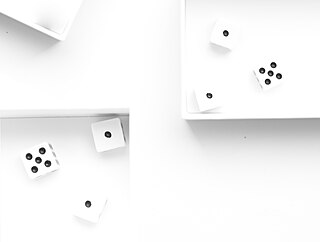 W
WAn aerial image is a projected image which is "floating in air", and cannot be viewed normally. It can only be seen from one position in space, often focused by another lens.
 W
WA Bioscope show was a music hall and fairground attraction consisting of a travelling cinema. The heyday of the Bioscope was from the late 1890s until World War I.
 W
WCross processing is the deliberate processing of photographic film in a chemical solution intended for a different type of film. The effect was discovered independently by many different photographers often by mistake in the days of C-22 and E-4. Color cross processed photographs are often characterized by unnatural colors and high contrast. The results of cross processing differ from case to case, as the results are determined by many factors such as the make and type of the film used, the amount of light exposed onto the film and the chemical used to develop the film. Similar effects can also be achieved with digital filter effects.
 W
WCutting on action or matching on action refers to film editing and video editing techniques where the editor cuts from one shot to another view that matches the first shot's action.
 W
WFilm gauge is a physical property of photographic or motion picture film stock which defines its width. Traditionally, the major movie film gauges are 8 mm, 16 mm, 35 mm, and 65/70 mm. There have been other historic gauges in the past, especially in the silent era, most notably 9.5 mm film, as well as a panoply of others ranging from 3 mm to 75 mm.
 W
WFogging, also known as blurring, is used for censorship or privacy. An area for a picture or movie is blurred to obscure it from sight. This form of censorship is used for sexually related images/scenes, hiding genitals, pubic hair, or sexual penetration of any sort. Pixelization is a form of fogging. In Japan, where it is called bokashi, fogging is employed on most films aired on public television that feature adult content of any kind.
 W
WIn film and television crews, the gaffer or chief lighting technician is the head electrician, responsible for the execution of the lighting plan for a production. The term "gaffer" originally related to the moving of overhead equipment to control lighting levels using a gaff. The gaffer's assistant is the best boy electric.
 W
WHigh-key lighting is a style of lighting for film, television, or photography that aims to reduce the lighting ratio present in the scene. This was originally done partly for technological reasons, since early film and television did not deal well with high contrast ratios, but now is used to suggest an upbeat mood. It is often used in sitcoms and comedies. High-key lighting is usually quite homogeneous and free from dark shadows. The terminology comes from the higher balance in the ratio between the key light and the fill light in a traditional three point lighting setup.
 W
WKeller-Dorian cinematography was a French technique from the 1920s for filming movies in color, using a lenticular process to separate red, green and blue colors and record them on a single frame of black-and-white film. Keller-Dorian was primarily a manufacturer of paper and aluminum foil. It was granted 38 patents. While researching how to create dies to color aluminum foil, they accidentally stumbled on this cinematography technique. This additive color system differs from other systems, for example Technicolor, which divided the colors into more than one frame on one or more pieces of film.
 W
WLow-key lighting is a style of lighting for photography, film or television. It is a necessary element in creating a chiaroscuro effect. Traditional photographic lighting uses a key light, a fill light and a back light for illumination. Low-key lighting often uses only a key light, optionally controlled with a fill light or a simple reflector.
 W
WMasterImage 3D is a company that develops stereoscopic 3D systems for theaters, and auto-stereoscopic 3D displays for mobile devices.
 W
WThe French perchman is equivalent to the U.S. boom operator in film production, also called the sound assistant or boomer, but differs regarding attributions. The perchman is the production sound mixer's assistant and is in charge of the microphone placement, typically using a light and telescopic pole also called a fish pole or boom.
 W
WA practical effect is a special effect produced physically, without computer-generated imagery or other post production techniques. In some contexts, "special effect" is used as a synonym of "practical effect", in contrast to "visual effects" which are created in post-production through photographic manipulation or computer generation.
 W
WA process trailer, also known as insert trailer and low loader, is a trailer towed by a tracking vehicle for the purpose of being used as a moving camera platform. They are generally very low to the ground to give a realistic perspective of height and can be expanded in width to allow the camera to achieve a wider shot.
 W
WA production sound mixer, location sound recordist, location sound engineer, or simply sound mixer is the member of a film crew or television crew responsible for recording all sound recording on set during the filmmaking or television production using professional audio equipment, for later inclusion in the finished product, or for reference to be used by the sound designer, sound effects editors, or foley artists. This requires choice and deployment of microphones, choice of recording media, and mixing of audio signals in real time.
 W
WShallow focus is a photographic and cinematographic technique incorporating a small depth of field. In shallow focus, one plane of the scene is in focus while the rest is out of focus. Shallow focus is typically used to emphasize one part of the image over another. Photographers sometimes refer to the aesthetic quality of the unfocused area(s) as bokeh.
 W
WSeveral methods can achieve simplicity in a photograph. The most obvious is to place the subject against a neutral background such as a backdrop or the sky. Backgrounds can be entirely neutral, like a solid backdrop or a cloudless sky; or they can complement the image, like a starfish on the sand.
 W
WA stunt team is a crew of stunt performers that follow the direction of the stunt coordinator to collectively participate and execute an action sequence for film, television series, commercials, theater or live performance.
 W
WThe Tiffen Company is a company in Hauppauge, New York, U.S. which manufactures filters for photography, and other professional film and photography-related products. Founded in 1945, by Sol Tiffen who brought his brothers Leo and Nat into the business, the company has won several Academy Awards for technical achievements in filtration. Nat Tiffen, as well as Ira Tiffen, each won technical achievement awards.
 W
WTilting is a cinematographic technique in which the camera stays in a fixed position but rotates up/down in a vertical plane. Tilting the camera results in a motion similar to someone raising or lowering their head to look up or down. It is distinguished from panning in which the camera is horizontally pivoted left or right. Pan and tilt can be used simultaneously. In some situations the lens itself may be tilted with respect to the fixed camera body in order to generate greater depth of focus.
 W
WA two shot is a type of shot in which the frame encompasses two people. The subjects do not have to be next to each other, and there are many common two shots which have one subject in the foreground and the other subject in the background.
 W
WA video editor is involved in video production and the post-production of film making. The video editor's responsibilities involve decisions about the selection and combining of shots into sequences, as well as the addition of accompanying sound effects and music—to ultimately create a finished movie, television program, commercial, promo, or snipe. Video editors usually use non-linear editing software to accomplish the task of editing. A video editor is a technically inclined individual that makes creative video editing decisions.